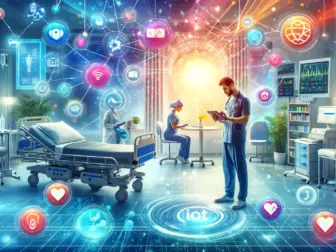Tag - IoT on healthcare
The Impact of IoT on Healthcare: Revolutionizing Patient Care with Connected Devices
The Internet of Things (IoT) has revolutionized many industries, and healthcare is no exception. Through the use of connected devices, healthcare providers are able to monitor patients in real-time, gather valuable data on their health status, and provide personalized care like never before. This innovative technology has the potential to greatly improve patient outcomes, increase efficiency in healthcare delivery, and reduce costs.
One of the key benefits of IoT in healthcare is the ability to remotely monitor patients. Connected devices such as wearable trackers, smart scales, and blood pressure monitors can provide healthcare providers with continuous data on a patient’s vital signs and health metrics. This real-time monitoring allows for early detection of potential health issues, timely interventions, and personalized treatment plans. Patients can also benefit from improved self-management of their health conditions, as they have access to their own health data and can track their progress over time.
IoT devices can also help healthcare providers streamline their operations and improve efficiency. For example, hospitals can use IoT sensors to track the location of medical equipment, monitor room occupancy, and manage inventory more effectively. This technology can reduce wait times for patients, optimize resource allocation, and ensure that healthcare providers have the necessary supplies on hand when needed. In addition, IoT devices can automate routine tasks such as patient check-ins, medication reminders, and appointment scheduling, freeing up healthcare professionals to focus on more complex and critical aspects of patient care.
Furthermore, IoT in healthcare can enable better communication and collaboration among healthcare providers. For instance, connected devices can facilitate secure sharing of patient data between different healthcare facilities, allowing for more coordinated care across various providers and specialties. This seamless exchange of information can help prevent medical errors, reduce duplicate tests, and ensure that all caregivers are informed and involved in a patient’s treatment plan. Additionally, IoT platforms can support telemedicine services, enabling remote consultations, monitoring, and follow-up care for patients who may not have easy access to traditional healthcare services.
Despite the many benefits of IoT in healthcare, there are also significant challenges that must be addressed to ensure successful implementation and adoption of this technology. Data security and privacy concerns are paramount, as the sharing of sensitive patient information over interconnected devices raises the risk of data breaches and unauthorized access. Healthcare organizations must invest in robust cybersecurity measures, compliance with regulations such as HIPAA, and ongoing training for staff to safeguard patient data and maintain trust in the healthcare system.
In conclusion, the integration of IoT in healthcare has the potential to transform the way patient care is delivered and improve health outcomes for individuals worldwide. By leveraging connected devices, healthcare providers can monitor patients remotely, enhance operational efficiency, improve care coordination, and empower patients to take control of their own health. While there are challenges to overcome, the benefits of IoT in healthcare are clear, and this technology is poised to revolutionize the healthcare industry for years to come.
